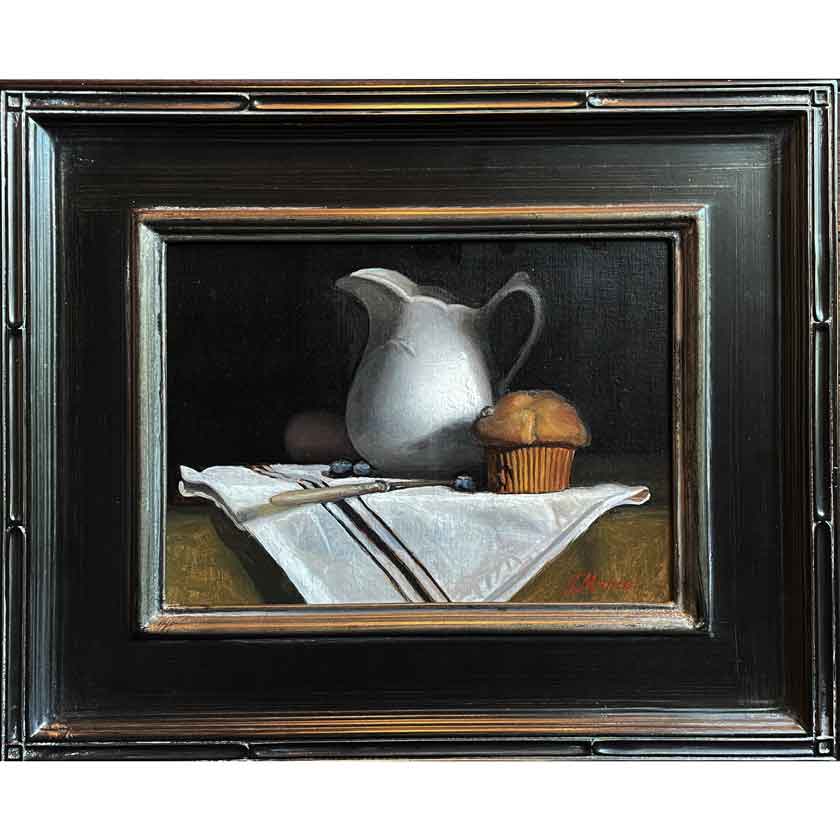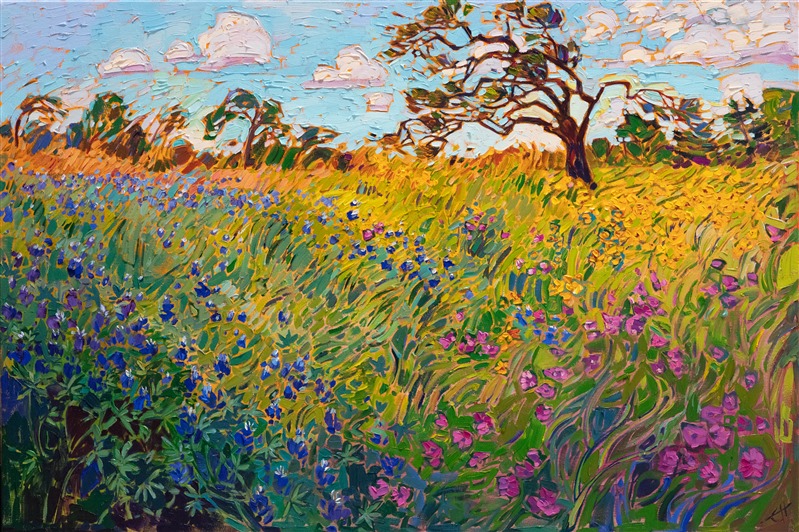Browse Stunning Authentic Oil Paintings for Sale Online
Browse Stunning Authentic Oil Paintings for Sale Online
Blog Article
Discovering All About Oil Paintings: An Overview to Understanding Their Elegance and Value
Oil paintings have captivated audiences for centuries, supplying a glance into the artistic mastery of numerous eras. Their rich background is intertwined with cutting-edge methods and profound emotional expression. Understanding the products and approaches behind these artworks can boost recognition. Furthermore, the marketplace for oil paints presents possibilities for capitalists and collection agencies alike. As one discovers this remarkable world, the question emerges: what makes an oil paint absolutely important?
The Background of Oil Painting: A Journey Via Time
Oil painting has origins that date back to old times, it really thrived throughout the Renaissance, when artists uncovered its flexibility and abundant shade possibility. Early instances can be mapped to the 7th century, with strategies progressing especially throughout cultures. The medium became prominent in Northern Europe in the 15th century, specifically through the works of artists like Jan van Eyck, that originated its use for thorough realistic look and lively hues. This period noted a separation from tempera paints, enabling for better deepness and texture. As oil paint spread, it affected countless musicians, resulting in masterpieces by prominent numbers such as Leonardo da Vinci and Rembrandt. The medium's heritage continues, shaping the art globe well right into contemporary times.
Recognizing Oil Repaints: Materials and Techniques
As artists explore the globe of oil paints, they come across a diverse selection of products and methods that define this tool. The primary elements of oil paint consist of pigments, which give color, and drying oils, such as linseed, that bind the pigments and facilitate application. Numerous ingredients can customize the paint's texture and drying time, improving flexibility. Techniques like glazing, where clear layers are accumulated, and impasto, which includes applying thick paint, permit for different visual effects. In addition, making use of brushes, combination knives, and also fingers can produce special appearances and surfaces. Recognizing these methods and materials enables musicians to totally share their creativity and attain the wanted impact in their art work.
The Function of Shade in Oil Paintings
Shade plays a critical function in oil paints, influencing both aesthetic appeal and psychological resonance. Understanding color concept fundamentals, consisting of the partnerships in between hues, can improve a musician's capacity to communicate mood and ambience. Furthermore, grasping color blending methods enables greater deepness and richness in a paint's combination.

Shade Theory Fundamentals
Recognizing shade concept is necessary for musicians dealing with oil paints, as it forms the structure for developing unified and visually engaging compositions. Color concept incorporates the study of just how shades communicate, the color wheel, and the connections in between key, secondary, and tertiary colors. Musicians make use of complementary colors to enhance contrasts and produce focal factors, while analogous colors advertise unity and cohesiveness within a piece. Additionally, the ideas of amazing and cozy shades affect the assumption of depth and area in a paint. Comprehending these concepts permits artists to control color effectively, leading the customer's eye and connecting their designated message. Proficiency of color concept ultimately enriches a musician's capability to share emotions and concepts with their work.
Emotional Impact of Color
The emotional effect of color in oil paintings plays a crucial role in exactly how customers link and perceive with artwork. Shades evoke particular sensations and moods, influencing the visitor's emotional state. For example, warm shades like oranges and reds can develop a sense of warmth and energy, while amazing tones such as blues and greens frequently evoke peace or self-contemplation. Artists strategically pick color schemes to enhance narrative aspects, guiding the audience's psychological trip. The saturation and contrast of shades additionally magnify these effects, drawing interest and developing emphasis. Ultimately, the interplay of shades in oil paintings not just boosts their aesthetic charm yet additionally works as a powerful tool for psychological expression, enhancing the customer's experience and analysis.
Shade Combining Techniques
While numerous aspects of oil painting add to the general composition, grasping color mixing methods is important for accomplishing wanted effects and depth. Color mixing can be approached through numerous methods, including the additive and subtractive processes. Additive mixing involves integrating colors of light, while subtractive mixing relies on pigments, where colors mix to produce new shades. Musicians usually use a limited combination to develop harmonious works, recognizing the relationships between main, secondary, and tertiary shades. Techniques such as glazing and scumbling further boost depth and luminosity. By masterfully mixing colors, an artist can stimulate feelings, produce focal points, and accomplish a feeling of realism, ultimately elevating the painting's visual and emotional influence.
Famous Oil Painters and Their Iconic Works

Well known for their mastery of color and method, oil painters have produced a few of the most well known art work in background. Prominent musicians like Vincent van Gogh astounded audiences with his stirring brushwork in "Starry Night," while Claude Monet's "Impression, Daybreak" laid the foundation for Impressionism. Leonardo da Vinci's "Mona Lisa" remains an enduring symbol of imaginative brilliant, showcasing his skill in capturing human expression. At the same time, Rembrandt's "The Evening Watch" illustrates his cutting-edge use light and darkness. Various other noteworthy numbers include Pablo Picasso, who transformed modern art with his bold experimentation in works like "Les Demoiselles d'Avignon," and Georgia O'Keeffe, whose lively depictions of blossoms and landscapes assisted specify American modernism. Each artist's one-of-a-kind design contributed significantly to the oil paint landscape.
How to Evaluate the Top Quality of an Oil Painting
Reviewing the top quality of an oil painting involves a cautious analysis of workmanship techniques, in addition to an evaluation of color and make-up. Observing brushwork, layering, and the application of paint can expose the musician's skill degree. Furthermore, the interplay of shades and the general setup of components contribute significantly to the paint's aesthetic value.
Assessing Craftsmanship Techniques
A careful assessment of workmanship methods is necessary for identifying the high quality of an oil painting. Critics must first take a look at the application of paint; thick, textured brushstrokes might recommend a knowledgeable hand, while excessively consistent applications might suggest a lack of deepness. oil paintings for sale. The layering strategy is likewise crucial; the existence of glazes and differed thickness can enhance luminance and intricacy. In addition, the top quality of the products utilized, such as the canvas and pigments, plays a significant duty in sturdiness and total aesthetic. Attention to information in components like edges and shifts in between colors shows the artist's dedication to their craft. Ultimately, these strategies contribute to the painting's psychological influence and market price, offering as indicators of the artist's skill and intent
Analyzing Shade and Make-up
While examining the top quality of an oil painting, one should focus on the interplay of shade and make-up, as these aspects are basic to the art work's overall impact. Color options can evoke emotions and develop state of mind; for that reason, the musician's scheme must be checked out for consistency and contrast. A healthy make-up routes the visitor's eye and produces a sense of unity. Musicians usually employ methods like the rule of thirds or leading lines to enhance aesthetic interest. Additionally, using light and shadow can add depth, enhancing the three-dimensionality of the paint. Eventually, an effective oil painting marries shade and composition, engaging the visitor and welcoming a deeper gratitude of the artist's vision and strategy.
Taking care of and Preserving Oil Paintings
Appropriate treatment and preservation of oil paintings is essential for maintaining their stability and durability. To shield these artworks, it is vital to display them far from straight sunshine, which can create fading and discoloration. Preserving a steady environment with regulated temperature level and moisture further help in avoiding damage. Cleaning up must be done gently making use of a soft, website completely dry towel, avoiding any type of extreme chemicals that can harm the paint or varnish. Routine examinations for indications of degeneration, such as flaking or cracking, are advisable. When storing or delivering oil paintings, appropriate cushioning and framing are needed to stay clear of physical damage. Inevitably, persistent treatment adds to the aesthetic charm and worth of oil paints gradually.
The Market for Oil Paints: Spending and collecting
Comprehending the marketplace characteristics for oil paints is important for collectors and capitalists alike. The worth of these artworks is influenced by numerous factors, including the artist's reputation, historic significance, and present patterns. Collection agencies frequently look for items that reverberate personally while thinking about possible appreciation in value. Galleries and public auctions function as key places for purchasing and selling, with costs fluctuating based upon need and rarity. Buying oil paintings needs study right into the market, as well as an understanding of authenticity and provenance. In addition, arising artists may offer chances for considerable returns, while established names can regulate high prices. Generally, a critical technique to gathering can generate both visual pleasure and monetary incentives.

Often Asked Questions
What Are the Environmental Influences of Oil Paint Materials?
The environmental effects of oil painting materials consist of the release of volatile organic substances (VOCs), hazardous waste generation, and resource extraction for pigments. These variables add to air pollution and environmental degradation, raising concerns amongst environmentally conscious musicians and customers.
Exactly How Do Different Canvases Influence Oil Paint Results?
Different canvases affect oil paint results substantially. Surface area, absorbency, and structure quality can alter paint application, drying times, and shade vibrancy. Artists often pick specific canvases to accomplish desired results and enhance their creative expression.
Can Oil Paintings Be Brought Back if Damaged?
If damaged, Oil paints can certainly be restored. Specialist conservators utilize numerous methods to fix tears, clean surfaces, and address staining, guaranteeing that the art work keeps its initial elegance and worth for future generations.
What Are the Indicators of an Original Oil Paint?
The indicators of an original oil paint consist of visible brush strokes, texture variants, and an unequal canvas weave (oil paintings for sale). Additionally, credibility might be validated through provenance, signatures, and the visibility of a varnish layer special to oil mediums
Exactly How Has Technology Influenced Modern Oil Paint Techniques?
Innovation has actually considerably influenced contemporary oil paint techniques by presenting digital devices for planning, enhanced materials for structure and longevity, and on-line platforms for sharing and offering art, thus broadening artists' innovative opportunities and target market reach. Oil paint has origins that date back to ancient times, it really flourished during the Renaissance, when musicians found its adaptability and abundant shade potential. The psychological influence of shade in oil paintings plays a crucial duty in exactly how viewers connect and perceive with art work. While many facets of oil paint add to the total make-up, mastering color blending methods is crucial for attaining preferred results and depth. Assessing the high quality of an oil paint entails a cautious analysis of craftsmanship strategies, as well as an evaluation of shade and structure. While reviewing the high quality of an oil painting, one need to concentrate on the interaction of color and structure, as these components are fundamental to the artwork's total influence.
Report this page